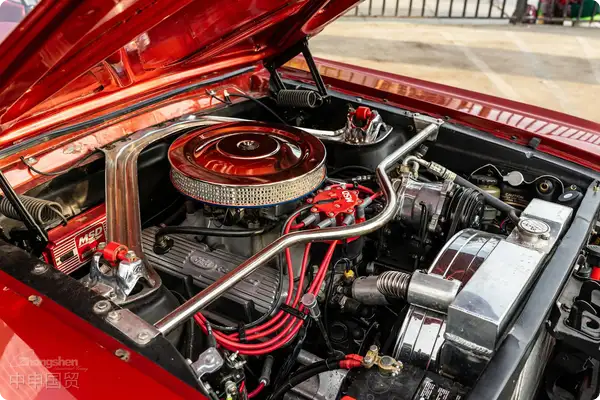- Shanghai Zhongshen International Trade Co., Ltd. - Two decades of trade agency expertise.
- Service Hotline: 139 1787 2118

High performanceAutomotive partsImport Representation: Industry Insights and Professional Services Guide
With the continuous upgrading of China's automotive consumer market and the rise of modification culture, the import demand for high-performance automotive parts (such as turbochargers, carbon fiber body kits, racing-grade braking systems, ECU tuning modules, etc.) has experienced explosive growth. However, the import of such products involves complex regulatory barriers, technical certifications, and supply chain management issues. As a professional deeply rooted in...foreign tradeWith 20 years of experience in the agency service industry, this article will systematically analyze the core pain points and solutions for importing high-performance automotive parts, helping enterprises efficiently expand their market.
Contents
ToggleI. Three Core Challenges in Importing High-Performance Automotive Parts
1.Technical Standards and Certification Barriers
- European Union: Must comply with ECE (E-mark) certification, covering indicators such as emissions, noise, and safety (e.g., ECE R90 brake pad certification);
- United States: DOT certification (e.g., FMVSS 135 Brake System Standard), some components require SAE performance testing;
- China: The CCC mandatory certification covers certain categories (such as vehicle lights and seat belts), and modified parts require additional submission of the "Vehicle Conformity Certificate" for record.
2.The HS code classification of automotive parts is complex (for example, the tax rate difference between complete parts and spare parts can reach 15%). Accurate declaration is required to avoid customs inspections. Experienced agents can optimize the tax cost through pre - classification services.
- High-performance parts are prone to customs classification disputes due to their technical specificity (for example, the duty rate difference for carbon fiber hoods classified under "body parts" (8708.29) or "composite material products" (3926.90) can reach up to 12%);
- The flexible application of rules of origin (such as the RCEP Agreement) can reduce tax burden costs.
3.Supply Chain Lead Time and Quality Control Risks
- Precision components (such as forged wheels, titanium alloy exhaust systems) have stringent requirements for transportation temperature, humidity, and shock resistance levels;
- Most modification brands are small and medium-sized manufacturers with unstable supply cycles, necessitating the establishment of a spare parts inventory buffer mechanism.
II. Industry-Level Solution: End-to-End Import Agency Service Framework
1. Pre-admission assessment and compliance planning
- Technical pre-review: Engage third-party laboratories (such as TüV, SGS) to verify in advance whether the product complies with GB/T industry standards and its compatibility with target vehicle models;
- Tariff optimization: Determine the HS code through "pre-classification rulings," and design a "bonded warehousing + distribution" model by leveraging free trade zone policies;
- Legal Risk Control: Provide localized compliance recommendations for legal gray areas in aftermarket parts (such as decibel limits for exhaust sound).
2. Agile Customs Clearance and Logistics Special Project
- Fast customs clearance:Utilize the AEO Advanced Certification to implement "two-step declaration" and "advance declaration," thereby reducing the time spent at ports;
- Special transport: Equip precision components with constant-temperature air-cushion vehicles and anti-static packaging, adopting a "door-to-door" insured intermodal transportation solution;
- Traceability management: Achieve seamless integration of accessory production batches, quality inspection reports, and customs data through blockchain technology.
3. Market Landing Support
- Channel adaptation: Develop a tiered supply chain tailored for B-end distributors and C-end e-commerce platforms (such as JD Car Care and Tmall Customization);
- After - sales compliance: Assist in establishing NDEC (Non-road Mobile Machinery Environmental Protection Information Disclosure) filing to mitigate the risk of environmental penalties;
- Data empowerment: Provide market heat analysis for imported parts (e.g., turbochargers with an annual growth rate of 23%) to guide customers in precise product selection.
III. Practical Case: Import Project of a German Racing-Grade Shock Absorber
Products with paint coatings were detained by the Los Angeles Customs for CPSC lead content sampling inspection: A domestic performance car club needs to import XYZ-brand competition shock absorbers from Germany but faces challenges due to the lack of EU E-mark certification and obstacles in applying for CCC exemption domestically.Maritime TransportationVibration caused issues such as oil leakage claims.
Solutions:
- Technical aspect: Collaborated with Germany's TüV agency to supplement and complete the E-mark R13 (suspension system) certification;
- Customs clearance end: Apply for the "Temporary Import Declaration for Non-mass-produced Automotive Parts" to circumvent the CCC mandatory catalog;
- Logistics end: Customized the solution of "air column bag shockproof + constant temperature container + video evidence upon arrival for unpacking", reducing the cargo damage rate to 0.2%.
Achievements: The project cycle was shortened by 40%, overall costs were reduced by 18%, and the customer's annual import volume exceeded 2,000 units.
IV. Industry Trends: New Opportunities Brought by Electrification and Intelligence
With theNew energyThe increase in automobile penetration rate (reaching 26% in Q1 2023) has led to new characteristics in the import of high-performance accessories:
- Electrification track: The demand for lightweight chassis components (such as magnesium alloy battery brackets) and 800V high-voltage fast-charging modules has surged in imports;
- Intelligent demand: ADAS calibration equipment, OTA upgrade authorization codes, and other "hardware-software integration" accessories have become new categories for customs clearance;
- ESG Compliance: The new EU Battery Regulation (EU 2023/1542) mandates the provision of carbon footprint declarations, compelling supply chains to upgrade.
Conclusion
The import of high-performance automotive parts has evolved from "trade execution" to a full-dimensional competition encompassing "technology + compliance + data." Professional agency service providers must deeply integrate with technical institutions, logistics partners, and policy resources to build an integrated capability spanning "front-end access, mid-end fulfillment, and back-end operations." Only then can they gain a competitive edge in the trillion-dollar blue ocean of the automotive aftermarket.
(Source of data in this article: General Administration of Customs of China, China Association of Automobile Manufacturers, EU Technical Regulations Database)
Related Recommendations
? 2025. All Rights Reserved. Shanghai ICP No. 2023007705-2  PSB Record: Shanghai No.31011502009912
PSB Record: Shanghai No.31011502009912









